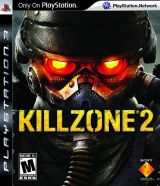GameSpy: Are there any significant differences in gameplay between the single-player and multiplayer modes?
Steve Ter Heide: We wanted to keep the same feeling of intensity and immersion in both of the modes, that idea of being in the frontline of a large-scale battle. There are of course some differences, multiplayer by its nature is more dynamic and faster because of the interaction with other people. The idea behind multiplayer is more about defining your playstyle and customizing your experience to fit that using the badges. Single-player allows for more variety in pacing, so we can incorporate things like the hit responses or first-person lean-and-peek.GameSpy: Shooters are often remembered for their most unique weaponry. What are the most interesting weapons available in Killzone 2?
Steve Ter Heide: We wanted to create weapons that each have their unique capabilities, rather than a large set of similar weapons. We have got [everything] from the knife to an electricity gun [to a] gun that fires explosive bolts than can pin enemies to walls. Personally, I like the electricity gun a lot. The effects of it firing are great, you feel really powerful. Oh, and the Exoskeleton can be considered a weapon as well, it is this big mech that you can use to fire missiles.
The Tech
GameSpy: Have you considered toning back the visuals in order to achieve a smoother framerate when the action gets hectic onscreen?
Steve Ter Heide: We really wanted to overwhelm the player, and we've set the bar for ourselves pretty high. From the outset we had a clear idea of how we wanted the game to look, sound and play and because we make our own technology we could really build to order.GameSpy: To what extent are the environments destructible?
Steve Ter Heide: The idea that bullets have an impact was really important. With the environments we wanted large set pieces that crumble spectacularly, but also make sure that smaller shootouts are rewarding you when you miss your enemy. At the same time we had to make sure we get a clear visual language for the player, what is safe to take cover behind and what isn't. Anything wood can be fully destroyed for instance. Concrete and metal will be more sturdy and will continue to provide cover, for the most part anyway. Oh, and I have to mention burning banners, setting those alight with your flamethrower is just great!





